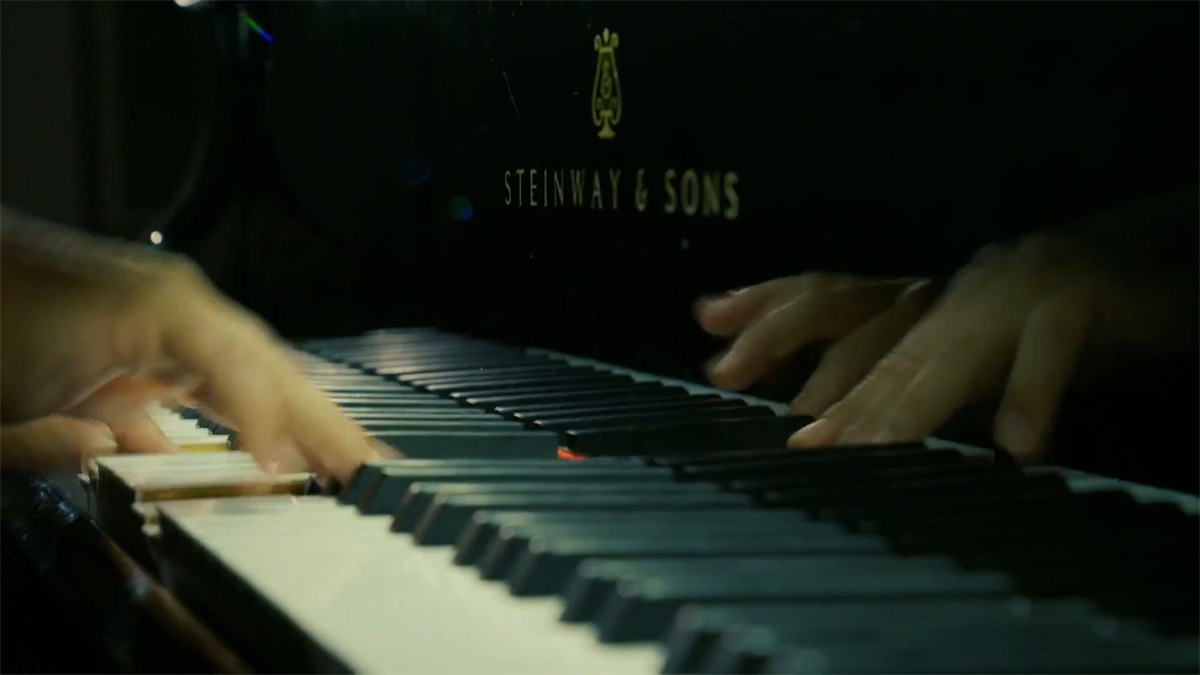It is one of the most famous and infl uential ideas in the history of aesthetic theory: “ All art constantly aspires towards the condition of music.” 1Th is pronouncement appears in “The School of Giorgione,” an 1877 essay by the Oxford don Walter Pater that is nominally about painting, but is more broadly concerned with the interrelations and common aims of all the arts. Laying out the principles of true aesthetic appreciation, Pater begins by conceding that each art has “its own peculiar and untranslatable sensuous charm”. He also notes, however, that the arts “are able, not indeed to supply the place of each other, but reciprocally to lend each other new forces”. A sculpture can possess elements of tragic drama, a sonnet can call a picture to mind, and every artistic work that has ever been created attempts in some way to be like music, which Pater praises as “the typical, or ideally consummate art, the object of all that is artistic, or partakes of artistic qualities.
” Music commands widespread emulation, Pater says, because of its abstract nature: it contains nothing in the way of worldly subject matter and therefore attains a purity that “all art constantly strives aft er, and achieves in different degrees”. Regardless of how devoted writers, painters, or actors might be to their particular craft s, then, Pater fi nds that they all are called to the same, fundamentally musical purpose, and that their works might contain something that can be heard as well as read, seen, or felt. Pater’s aphorism has inspired artists in every medium over the years, but for the American author of the late nineteenth and early twentieth century, his assertion of music’s supremacy sometimes struck a discordant note.
Ezra Pound
Ezra Pound gave it equal importance to his own theory of Imagism in the fi rst issue of Blast, but he did not think so well of it as to quote it correctly: “All arts approach the conditions of music,” he wrote. 2 William Carlos Williams fl atly declared in Spring and All that “I do not believe writing would gain in quality or force by seeking to attain to the conditions of music. I think the conditions of music are objects
for the action of the writer’s imagination.”
T. S. Eliot mocked the works of Pater as “misch-masch potpourri” in an early version of Th e Waste Land, and he later suggested that the true poet “aspires to the condition of the music-hall
comedian” instead.
Even F. Scott Fitzgerald, whose undergraduate lyricism oft en showed the hallmarks of Pater’s infl uence, seems to have regarded him as an
out-of-date embarrassment, including his writings among the “misty side-streets of literature” wandered by Amory Blaine, the eff ete, dilettantish protagonist of his 1920 novel This Side of Paradise.
There is something not a little odd about Pater’s poor standing in the estimations of these and other American writers. In more friendly quarters, after all, his theory of aesthetic mutability is credited with having helped usher in the movement of cross-generic, interdisciplinary experimentation known as modernism, in which poems sometimes aspired to visuality, paintings to movement, and symphonies to color.
Moreover, a great many American writers during modernism’s moment – including some of the ones just quoted—betrayed intensely musical aspirations in their works. Authors of the late nineteenth and early twentieth centuries sometimes took music up as subject matter, whether in discussing its effect son listeners, in using musicians as characters, or in demonstrating the social function of Pater’s ultimate art in their own world and time.
On other occasions, they used music as a formal model for literature, attempting something like singing, record-playing, and sound tracking in their pages. Moreover, a considerable amount of American writing from this period reads as fundamentally hybrid in nature, bringing new, sounding dimensions to the silent act of reading and appealing to its audiences in distinctively non-textual ways.
The anti-Paterians, it would seem, protested a bit too much. Indeed, if Pater’s musical partisanship truly off ended the turn-of-the-century American writer, it may well have been because it had come to seem overly abstract and insufficiently thought out, deaf to the many actual possibilities of musical literature that were then being realized.
The book that follows is the story of this musical literature, a study of the ways in which nineteenth- and twentieth-century American authors successfully achieved “the condition of music” in their writing. The idea of musical literature is an ancient one and has been part of the Western tradition since Homer, but this book will advance an argument that has seldom been made: namely, that certain works of American literary modernism are not merely about or influenced by music but can be considered works of music in and of themselves.
The authors discussed here ask their readers to sing poems, to imagine fiction being accompanied by well-known melodies, to occupy unfamiliar roles and assume new perspectives through musical performance, and to inflect literary meaning with the techniques and associations of an admired sister art. In all cases, moreover, these authors write musically with the aim of making literature a more participatory, more audience-oriented, and therefore more authentically musical form. As the musicologist Christopher Small has put it, music is a distinctive art insofar as it emphasizes process over product, active involvement over passive reception: “The fundamental nature and meaning of music lie not in objects, not in musical works at all, but in action, in what people do,” Small writes. “It is only by understanding what people do as they take part in a musical act that we can hope to understand its nature and the function it fulfills in human life.
